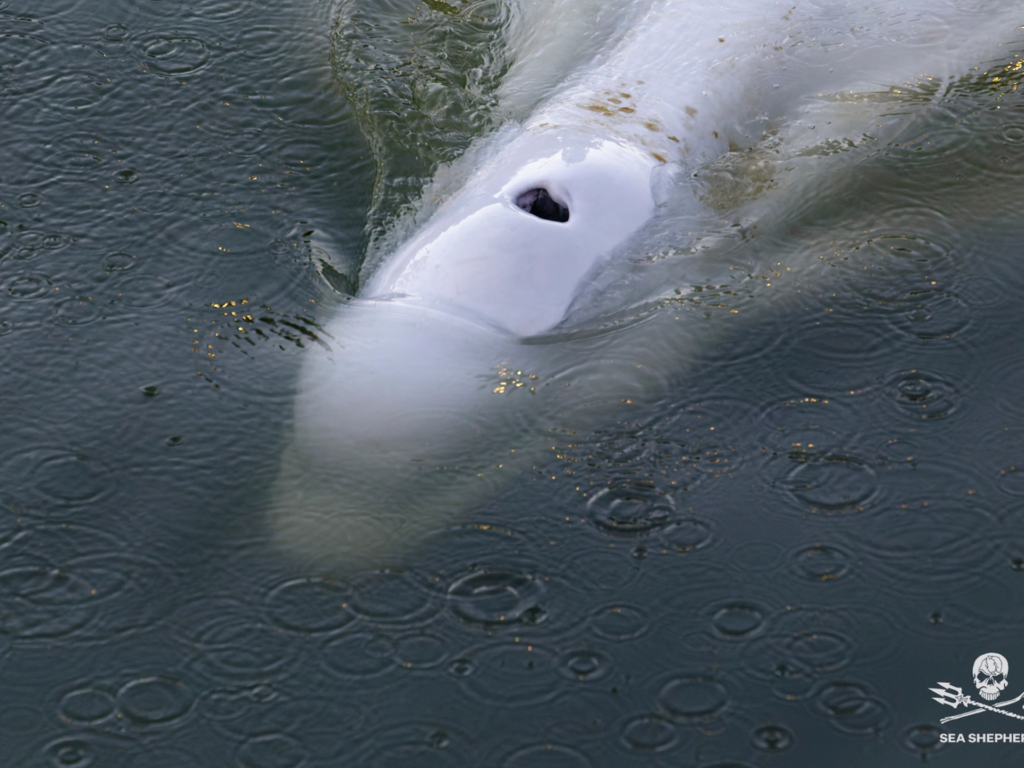
An ailing beluga whale that swam up the Seine river on Tuesday was the target of an ambitious effort organized by French marine experts, according to an AFP journalist who was present.
Before moving to the river to start the process of lifting it out of the water and onto a vehicle, a group of 24 police and fire department divers received a final briefing.
The protected four-meter (13-foot) cetacean, which is typically found in the cold waters of the Arctic, was first seen a week ago traveling in the direction of Paris and is currently 130 kilometers inland.
“It’s a long rescue operation, very technical, which required many skills,” Isabelle Dorliat-Pouzet, secretary general of the Eure prefecture, told journalists earlier Tuesday.
She stated that it would take about 80 people to secure the area, including 40 firefighters and many police officers.
To transfer the beluga into “a sort of hammock to suspend it above the water and bring it to a vehicle that will then transport it to the sea,” divers and animal specialists, and vets will operate.

People gathered along the river’s banks to see the operation’s preparations as they progressed.
“French 🇫🇷 officials are moving ahead with a delicate plan to transport a #beluga whale 🐳 back to the ocean after it swam far up the #Seine river toward #Paris, putting its life in danger. pic.twitter.com/Y0jGvYajjo”
— FRANCE 24 English (@France24_en) August 9, 2022
The animal’s health has deteriorated since it refused to eat, and a lock at Saint-Pierre-La-Garenne in Normandy has prevented it from moving inland.
However, Isabelle Brasseur of the Marineland sea animal park in southern France, the largest in Europe, told AFP earlier on Tuesday that it was in “satisfactory” condition.
Along with the non-profit organization Sea Shepherd France, Brasseur is a member of a Marineland team assigned to help with the rescue.
“What’s exceptional is that here the banks of the Seine are not accessible for vehicles… everything is going to have to be done by hand,” Brasseur said.
“Have it get it out” – Brasseur
The beluga has not turned around yet, and experts have ruled out using boats to “nudge” it back toward the Channel because doing so would stress the already-fragile animal and be ineffective.
The team will attempt to transfer the 800 kilograms (nearly 1,800 pounds) animal to an unknown ocean basin using a refrigerated truck.
The Eure authorities stated that they wanted to be able to treat it there for a few days before releasing it into the open sea.

“There it will, we hope, have a better chance of survival,” NGO Sea Shepherd France, which is assisting the operation, said on Tuesday.
It added that tranquilization is not an option, since belugas are so-called “voluntary breathers” that need to be awake to inhale air.
“There may be internal problems that we can’t see,” she said, even though belugas are “extremely hardy” as a species.
As belugas are referred to as “voluntary breathers,” they must be awake in order to breathe air, so tranquilization is not an option, it was said.
Throughout the move, veterinarians will keep constant watch.
“There may be internal problems that we can’t see,” she said, even though belugas are “extremely hardy” as a species.
Beluga Whale Growing Interest
Beyond France, concern about the beluga’s fate has led to a significant influx of monetary donations and other forms of assistance from both individuals and conservation organizations, according to officials.
On Monday, Sea Shepherd made a special request for heavy-duty ropes, nets, mattresses, and other supplies.

While they do come south in the autumn to feed when ice forms, belugas are usually exclusively seen in the cold waters of the Arctic.
The nearest beluga population is 3,000 kilometers (1,870 miles) from the Seine, off the Svalbard archipelago, north of Norway, according to France’s Pelagis Observatory, which specializes in marine mammals.
Only two belugas have ever been seen in France, and this one is trapped. In 1948, a fisherman’s net was used to remove the first one from the Loire Estuary.
Read More:
Netizens Shocked: Man shares picture of massive paperwork for Schengen visa